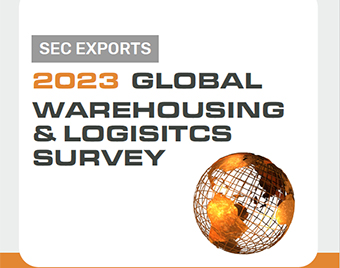2023 Global Warehousing & Logistics Survey
Discover insights from the 2023 Global Warehousing & Logistics Survey, highlighting trends, challenges, and innovations in supply chain management for industry professionals.
Open File
17.03.2021
From paying staff and purchasing equipment to energy bills and admin costs, warehouses incur many expenses. It can be tricky to understand how to reduce storage costs in your warehouse. With the right guidance, however, you can increase profits, decrease unnecessary financial losses, and improve operational efficiency – this page should break down some different -including the best – ways to reduce warehouse costs.
As with any business, running a warehouse will always incur costs. The types of costs vary between warehouses, depending on your industry, facilities, and capabilities.
It’s vital to have good knowledge of where your money is going and any potentially unnecessary costs when it comes to lowering warehouse costs while maintaining reliable warehouse operations. Here are some of the main elements that can contribute to the costs of your warehouse:
Improving your warehouse’s operations, inventory visibility and warehouse management systems by having a solid warehouse management system helps keep costs down, and keep staff and customers happy. With the right strategy, you can increase efficiency and productivity to help you lower costs.
However, implementing cost-cutting measures can be daunting; how do you reduce warehouse costs and where do you start? Keep reading these top tips to understand the best way to reduce expenses, enforce a reliable and effective inventory management system, and total warehouse operating costs, while improving your warehouse’s operations: cut costs with help from SEC Group.
Instead of paying for more storage space, you can save money by optimising your existing space. Land cost is one of the biggest expenses warehouse owners have to account for. Whether you’re renting or if you own your property, the larger your warehouse is the more it will cost. However, having a warehouse with a larger space may not be cost-effective.
A more profitable solution when controlling warehousing costs may be to optimise your storage space through pallet racking, shelving, slotting and intelligent warehouse design, which are popular storage solutions for those streamlining warehouse processes and keeping skyrocketing inventory costs to a minimum.
As part of your process of creating more reliable warehouse operations, you should incorporate aisles that make navigation easier for staff, whether they’re on foot or operating machinery. Not only do they optimise storage space, but they also allow staff to locate goods faster and more efficiently, which will also help with inventory management (and inventory control) as well as overall warehouse management and reducing costs.
Pallet racking is the best way to optimise your existing space while reducing warehouse costs. Racking utilises vertical space and increases the square footage available to use for pallets.
Depending on how high the storage system climbs in your warehouse, you may need to use a forklift to load pallets onto the racking. You can also automate the stacking and picking process using machinery.
There is a wide range of pallet racking systems available, ranging from double-deep racking that allows you to store pallets two-deep on a single self, to mobile racking that you can move using a remote control to reduce how many aisles you need.
If pallet racking is something you would benefit from implementing in your own warehouse don’t hesitate to contact SEC Group today, the experts who are here to help, with your best warehousing and storage interests at heart.
Operational efficiency isn’t only about optimising storage space, you need to optimise your staff’s processes too, in order to achieve maximum warehouse productivity and to minimise warehouse costs.
This reduces labour costs as staff productivity increases, so your employees are spending more time on profitable actions. You may have a dedicated team – however, when work processes aren’t efficient, this will increase the time it takes to complete tasks.
For example, assigning staff a specific area to pick items from reduces time spent walking between different sections of the warehouse, which also improves operational efficiency, which will then have a positive effect in terms of speed and efficiency through the entire supply chain process. During working hours there should also be as little dwell time as possible. Having a set process that shows staff tasks they can complete while waiting for a delivery to arrive is a productive solution for an efficient warehouse management system.
Automating certain processes can also reduce long-term labour costs. For tasks where you need your staff, focus on employee retention – keeping your best and most experienced employees – it will cost less to continue paying the salary of an existing team member than to hire and train a new person. Investing in staff training that focuses on productivity will help you improve your operational efficiency and can increase long-term profits.
Cross docking can be beneficial when it comes to warehouse storage optimization considerations – it means unloading inventory from a manufacturer and delivering it directly to the customer. This process removes the need for a middleman and reduces how long items need to be stored for, or removes the storage stage completely. Using cross docking reduces costs as you optimise your operations and your storage space.
When a delivery arrives at your warehouse without a cross docking terminal the stock may need to be stored. This takes up valuable space unnecessarily, space which you could be using to store items that can’t be transferred directly to customers.
Having a cross docking terminal ensures outbound stock heads off to its destination without taking up any more time or space than needed. With the right cross docking process, you can reduce labour costs, warehousing costs, improve product management, and optimise storage space.
Do you know how much money you spend on energy costs for your warehouse? On average in 2020, large business unit rates were at nearly 13p per kWh for electricity and nearly 2p per kWh for gas. Following these metrics means the average energy bill for a large business could come to almost 12,000. This shows the money-saving potential that an energy-efficient warehouse has. (Your warehouse’s operating budget should be calculated with this in mind; you don’t want to be taken by surprise by your warehouse’s energy bill.)
As a warehouse owner, there are a few simple ways to reduce energy-associated costs. Heat losses not only mean your employees are cold and stock could be damaged, but all heating you’re paying for is lost. Improving your warehouse’s insulation helps your property retain warmth, which also reduces your energy bill as you don’t have to spend as much on heating.
Lighting is another area that causes energy costs to rise for warehouses. Automatic lighting is a great way to reduce artificial light usage. Whenever a member of staff exits an area, they don’t even have to think about switching off the lights, they turn off automatically after a period where they don’t sense motion. Adding windows increases natural light, which not only improves workplace wellbeing but also reduces how often you need to use artificial lighting.
Warehouse equipment purchases can take out a large chunk of your budget – ensure you maintain effective warehouse inventory management of your tools and machinery as well as of your stock and supplies.
When optimising your operational processes, consider whether you need to invest in an upfront purchase for equipment. If you don’t use the equipment regularly in your warehouse, it’s more cost-effective to hire the machinery as and when you need it. For any equipment you use every day, if possible, you should make sure it has multiple uses to give you maximum value for money.
You should also look after your equipment. If you don’t regularly maintain machinery, it could stop working, or worse, break while in use causing a safety hazard. When equipment experiences wear and tear, this shortens its lifespan, so you may need to replace it sooner. With regular maintenance, you can increase the equipment’s durability and extend its life removing the need to pay for expensive replacements.
Discover smart warehouse design solutions that have a direct impact on your business, while keeping warehouse management costs to a minimum – get in touch with SEC Warehouses today.


Discover insights from the 2023 Global Warehousing & Logistics Survey, highlighting trends, challenges, and innovations in supply chain management for industry professionals.
Open FileRobotics-as-a-service (RAAS) solves two problems facing many businesses today.
Read MoreWelcome to the world of seamless warehouse operations, where the introduction of Warehouse Management Systems (WMS) have revolutionised the way inventory is managed, tracked, and distributed.
Read MoreFor your Commercial Interior, Cleanroom or Warehouse Storage project, contact our experts today to find out how we can transform your business operations.
Unit 11 The iO Centre,
Arlington Business Park,
Stevenage, Hertfordshire,
United Kingdom, SG1 2BD